Concrete has been one of the most common building materials used in construction in the world for many centuries. The manufacturing of concrete plays an important role in the generation of global warming emissions and waste and causes non-renewable resource depletion. This research assesses the environmental impacts of the use of supplementary cementitious materials (SCMs) and engineered nanomaterials (ENMs) (i.e., by-products) as partial replacement of ordinary Portland cement in concrete. It also evaluates the structural performance of the use of construction and demolition waste as partial replacement of natural aggregate in concrete in terms of compressive strength and durability. Results show that the use of SCMs and ENMs reduces the global warming impact (GWI) and the cumulative energy demand (CED) of concrete production without reducing strength and durability. In some cases, it enhances durability and strength. However, there is a tradeoff between durability and strength improvement with the use of reengineered by-products resulting in increased GWI and CED. Although they produce almost the same GWI and CED as those of OPC concrete, improving the use of recycled aggregates as a partial natural aggregate replacement can reduce the use of virgin materials.
1.
Introduction
In the last two decades, the fractional difference equations have recently received considerable attention in many fields of science and engineering, see [1,2,3,4] and the references therein. On the other hand, the q-difference equations have numerous applications in diverse fields in recent years and has gained intensive interest [5,6,7,8,9]. It is well know that the q-fractional difference equations can be used as a bridge between fractional difference equations and q-difference equations, many papers have been published on this research direction, see [10,11,12,13,14,15] for examples. We recommend the monograph [16] and the papers cited therein.
For 0<q<1, we define the time scale Tq={qn:n∈Z}∪{0}, where Z is the set of integers. For a=qn0 and n0∈Z, we denote Ta=[a,∞)q={q−ia:i=0,1,2,...}.
In [17], Abdeljawad et.al generalized the q-fractional Gronwall-type inequality in [18], they obtained the following q-fractional Gronwall-type inequality.
Theorem 1.1 ([17]). Let α>0, u and ν be nonnegative functions and w(t) be nonnegative and nondecreasing function for t∈[a,∞)q such that w(t)≤M where M is a constant. If
then
Based on the above result, Abdeljawad et al. investigated the following nonlinear delay q-fractional difference system:
where qCαa means the Caputo fractional difference of order α∈(0,1), ˉIτ={τa,q−1τa,q−2τa,...,a}, τ=qd∈Tq with d∈N0={0,1,2,...}.
Remark 1.1. The domain of t in (1.2) is inaccurate, please see the reference [19].
In [20], Sheng and Jiang gave the following extended form of the fractional Gronwall inequality :
Theorem 1.2 ([20]). Suppose α>0, β>0, a(t) is a nonnegative function locally integrable on [0,T), ˜g(t), and ˉg(t) are nonnegative, nondecreasing, continuous functions defined on [0,T); ˜g(t)≤˜M, ˉg(t)≤ˉM, where ˜M and ˉM are constants. Suppose x(t) is a nonnegative and locally integrable on [0,T) with
Then
where t∈[0,T), g(t)=˜g(t)+ˉg(t) and Ckn=n(n−1)⋯(n−k+1)k!.
Corollary 1.3 [20] Under the hypothesis of Theorem 1.2, let a(t) be a nondecreasing function on [0,T). Then
where γ=min{α,β}, Eγ is the Mittag-Leffler function defined by Eγ(z)=∞∑k=0zkΓ(kγ+1).
Finite-time stability is a more practical method which is much valuable to analyze the transient behavior of nature of a system within a finite interval of time. It has been widely studied of integer differential systems. In recent decades, the finite-time stability analysis of fractional differential systems has received considerable attention, for instance [21,22,23,24,25] and the references therein. In [26], Du and Jia studied the finite-time stability of a class of nonlinear fractional delay difference systems by using a new discrete Gronwall inequality and Jensen inequality. Recently, Du and Jia in [27] obtained a criterion on finite time stability of fractional delay difference system with constant coefficients by virtue of a discrete delayed Mittag-Leffler matrix function approach. In [28], Ma and Sun investigated the finite-time stability of a class of fractional q-difference equations with time-delay by utilizing the proposed delayed q-Mittag-Leffler type matrix and generalized q-Gronwall inequality, respectively. Based on the generalized fractional (q,h)-Gronwall inequality, Du and Jia in [19] derived the finite-time stability criterion of nonlinear fractional delay (q,h)-difference systems.
Motivated by the above works, we will extend the q-fractional Gronwall-type inequality (Theorem 1.1) to the spreading form of the q-fractional Gronwall inequality. As applications, we consider the existence and uniqueness of the solution of the following nonlinear delay q-fractional difference damped system :
where [a,b)q=[a,b)∩Ta, b∈Ta, Iτ={qτa,τa,q−1τa,q−2τa,...,a}, τ=qd∈Tq with d∈N0={0,1,2,...}, qCαa and qCβa mean the Caputo fractional difference of order α∈(1,2) and order β∈(0,1), respectively, and the constant matrices A0, B0 and B1 are of appropriate dimensions. Moreover, a novel criterion of finite-time stability criterion of (1.5) is established. We generalized the main results of [17] in this paper.
The organization of this paper is given as follows: In Section 2, we give some notations, definitions and preliminaries. Section 3 is devoted to proving a spreading form of the q-fractional Gronwall inequality. In Section 4, the existence and uniqueness of the solution of system (1.5) are given and proved, and the finite-time stability theorem of nonlinear delay q-fractional difference damped system is obtained. In Section 5, an example is given to illustrate our theoretical result. Finally, the paper is concluded in Section 6.
2.
Preliminaries
In this section, we provided some basic definitions and lemmas which are used in the sequel.
Let f:Tq→R (q∈(0,1)), the nabla q-derivative of f is defined by Thabet et al. as follows:
and q-derivatives of higher order by
The nabla q-integral of f has the following form
and for 0≤a∈Tq
The definition of the q-factorial function for a nonpositive integer α is given by
For a function f:Tq→R, the left q-fractional integral q∇−αa of order α≠0,−1,−2,... and starting at 0<a∈Tq is defined by
where
The left q-fractional derivative q∇βa of order β>0 and starting at 0<a∈Tq is defined by
where m is the smallest integer greater or equal than β.
Definition 2.1 ([11]). Let 0<α∉N and f:Ta→R. Then the Caputo left q-fractional derivative of order α of a function f is defined by
where n=[α]+1.
Let us now list some properties which are needed to obtain our results.
Lemma 2.1 ([29]). Let α,β>0 and f be a function defined on (0,b). Then the following formulas hold:
Lemma 2.2 ([11]). Let α>0 and f be defined in a suitable domain. Thus
and if 0<α≤1 we have
The following identity plays a crucial role in solving the linear q-fractional equations:
where α∈R+ and μ∈(−1,∞).
Apply q∇αa on both sides of (2.10), by virtue of Lemma 2.1, one can obtain
where α∈R+ and μ∈(−1,∞).
By Theorem 7 in [11], for any 0<β<1, one has
For any 1<α≤2, by (2.8), one has
Apply q∇αa on both sides of (2.13), by Lemma 2.1 and (2.11), we get
3.
A generalized q-fractional Gronwall inequality
In this section, we give and prove the following spreading form of generalized q-fractional Gronwall inequality, which extend a q-fractional Gronwall inequality in Theorem 1.1.
Theorem 3.1. Let α>0 and β>0. Assume that u(t) and g(t) are nonnegative functions for t∈[a,T)q. Let wi(t) (i=1,2) be nonnegative and nondecreasing functions for t∈[a,T)q with wi(t)≤Mi, where Mi are positive constants (i=1,2) and
If
then
where w(t)=max{w1(t)Γq(α), w2(t)Γq(β)}.
Proof. Define the operator
According to (3.2), one has
By (3.5) and the monotonicity of the operator A, we obtain
In the following, we will prove that
and
Obviously, the inequality (3.7) holds for n=1. Assume that (3.7) is true for n=m, that is
When n=m+1, by using (3.4), (3.9), (2.10) and the nondecreasing of function w(t), we get
Am+1u(t)=A(Amu(t))
≤w(t)∫ta[(t−qs)α−1q+(t−qs)β−1q]
×(w(s)mm∑k=0CkmΓq(α)m−kΓq(β)kΓq((m−k)α+kβ)∫sa(s−qr)(m−k)α+kβ−1qu(r)∇qr)∇qs
≤w(t)m+1∫tam∑k=0CkmΓq(α)m−kΓq(β)kΓq((m−k)α+kβ)[(t−qs)α−1q+(t−qs)β−1q]
×[∫sa(s−qr)(m−k)α+kβ−1qu(r)∇qr]∇qs
=w(t)m+1m∑k=0CkmΓq(α)m−kΓq(β)kΓq((m−k)α+kβ)[∫ta(t−qs)α−1q∫sa(s−qr)(m−k)α+kβ−1qu(r)∇qr∇qs
+∫ta(t−qs)β−1q∫sa(s−qr)(m−k)α+kβ−1qu(r)∇qr∇qs]
=w(t)m+1m∑k=0CkmΓq(α)m−kΓq(β)kΓq((m−k)α+kβ)[∫ta∫tqr(t−qs)α−1q(s−qr)(m−k)α+kβ−1qu(r)∇qr∇qs
+∫ta∫tqr(t−qs)β−1q(s−qr)(m−k)α+kβ−1qu(r)∇qr∇qs]
=w(t)m+1m∑k=0CkmΓq(α)m−kΓq(β)kΓq((m−k)α+kβ)
×(Γq(α)∫ta[1Γq(α)∫tqr(t−qs)α−1q(s−qr)(m−k)α+kβ−1q∇qs]u(r)∇qr
+Γq(β)∫ta[1Γq(β)∫tqr(t−qs)β−1q(s−qr)(m−k)α+kβ−1q∇qs]u(r)∇qr)
=w(t)m+1m∑k=0CkmΓq(α)m−kΓq(β)kΓq((m−k)α+kβ)
×(Γq(α)∫taq∇−αqr(t−qr)(m−k)α+kβ−1qu(r)∇qr
+Γq(β)∫taq∇−βqr(t−qr)(m−k)α+kβ−1qu(r)∇qr)
=w(t)m+1m∑k=0CkmΓq(α)m−kΓq(β)kΓq((m−k)α+kβ)
×(Γq(α)Γq((m−k)α+kβ)Γq((m−k+1)α+kβ)∫ta(t−qr)(m−k+1)α+kβ−1qu(r)∇qr
+Γq(β)Γq((m−k)α+kβ)Γq((m−k)α+(k+1)β)∫ta(t−qr)(m−k)α+(k+1)β−1qu(r)∇qr)
=w(t)m+1m∑k=0CkmΓq(α)m−kΓq(β)k
×(Γq(α)q∇−((m−k+1)α+kβ)au(t)+Γq(β)q∇−((m−k)α+(k+1)β)au(t))
=w(t)m+1m∑k=0CkmΓq(α)m+1−kΓq(β)kq∇−((m−k+1)α+kβ)au(t)
+w(t)m+1m+1∑k=1Ck−1mΓq(α)m+1−kΓq(β)kq∇−((m+1−k)α+kβ)au(t)
=w(t)m+1[C0mΓq(α)m+1q∇−((m+1)α)au(t)
+m∑k=1(Ckm+Ck−1m)Γq(α)m+1−kΓq(β)kq∇−((m−k+1)α+kβ)au(t)
+CmmΓq(β)m+1q∇−((m+1)β)au(t)]
=w(t)m+1m+1∑k=0Ckm+1Γq(α)m+1−kΓq(β)kq∇−((m+1−k)α+kβ)au(t).
Thus, (3.7) is proved.
Using Stirling's formula of the q-gamma function [30], yields that
that is
where D=[2]1/2qΓq2(1/2). Moreover, if t>a>0 and γ>0 (γ is not a positive integer), then 1−atqj<1−atqγ+j for each j=0,1,..., and
By w1(t)<M1 and w2(t)<M2, one has that w(t)<max{M1Γq(α), M2Γq(β)}:=M. Applying the first mean value theorem for definite integrals [31], (3.10) and (3.11), there exists a ξ∈[a,t]q such that
From (3.1), for each t∈[a,T)q, we have
Thus, Anu(t)→0 as n→∞. Let n→∞ in (3.6), by (3.8) we get
From (3.7) and (3.12), we obtain (3.3). This completes the proof.
Corollary 3.2. Under the hypothesis of Theorem 3.1, let g(t) be a nondecreasing function on t∈[a,T)q. Then
Proof. By (3.3), (2.10) and the assumption that g(t) is nondecreasing function for t∈[a,T)q, we have
4.
Main results
Throughout this paper, we make the following assumptions:
(H1) f∈D(Tq×Rn×Rn,Rn) is a Lipschitz-type function. That is, for any x,y:Tτa→Rn, there exists a positive constant L>0 such that
for t∈[a,T)q.
(H2)
(H3)
Definition 4.1. The system (1.5) is finite-time stable w.r.t.{δ,ϵ,Te}, with δ<ϵ, if and only if max{‖ϕ‖,‖ψ‖}<δ implies ‖x(t)‖<ϵ, ∀t∈[a,Te]q=[a,Te]∩[a,T)q.
Theorem 4.1. Assume that (H1) and (H3) hold. Then the problem (1.5) has a unique solution.
Proof. First we have to prove that x:Tτa→Rm is a solution of system (1.5) if and only if
For t∈Iτ, it is clear that x(t)=ϕ(t) with ∇qx(t)=ψ(t) is the solution of (1.5). For t∈[a,T)q, we apply q∇αa on both sides of (4.4) to obtain
where (q∇αaq∇−αax)(t)=x(t) and (q∇αaq∇−(α−β)ax)(t)=q∇βax(t) (by Lemma 2.1) have been used. By using (2.12) and (2.14), we get
Conversely, from system (1.5), we can see that x(t)=ϕ(t) and ∇qx(t)=ψ(t) for t∈Iτ. For t∈[a,T)q, we apply q∇−αa on both sides of (1.5) to get
According to Lemma 2.2, we obtain
Secondly, we will prove the uniqueness of solution to system (1.5). Let x and y be two solutions of system (1.5). Denote z by z(t)=x(t)−y(t). Obviously, z(t)=0 for t∈Iτ, which implies that system (1.5) has a unique solution for t∈Iτ.
For t∈[a,T)q, one has
If t∈Jτ={a,q−1a,...,τ−1a}, then τt∈Iτ and z(τt)=0. Hence,
which implies that
By applying Corollary 3.2 and (H3), we get
where w1=max{‖A0‖Γ(α−β),‖B0‖+LΓ(α)}. This implies x(t)=y(t) for t∈Jτ.
For t∈[τ−1a,T)q, we obtain
Therefore,
Let z∗(t)=maxθ∈[a,t]q{‖z(θ)‖,‖z(τθ)‖} for t∈[τ−1a,T)q, where [a,t]q=[a,t]∩Ta, it is obvious that z∗(t) is a increasing function. From (4.10), we obtain that
By applying Corollary 3.2 and (H3) again, we get
where w2=max{‖A0‖Γ(α−β),‖B0‖+‖B1‖+2LΓ(α)}. Thus, we end up with x(t)=y(t) for t∈[τ−1a,T)q. The proof is completed.
Theorem 4.2. Assume that the conditions (H1), (H2) and (H3) hold. Then the system (1.5) is finite-time stable if the following condition is satisfied:
where w2=max{‖B0‖+‖B1‖+2LΓq(α),‖A0‖Γq(α−β)}.
Proof. Applying left q-fractional integral on both sides of (1.5), we obtain
By (4.12) and utilizing Lemma 2.2 we have
Thus, by (H1) and (H2), we get
Let g(t)=‖ϕ‖+‖ψ‖(t−a)+‖A0‖‖ϕ‖(t−a)α−βqΓq(α−β+1), then g is a nondecreasing function.
Set ˉx(t)=maxθ∈[a,t]q{‖x(θ)‖,‖x(τθ)‖}, then by (4.14) we get
Applying the result of Corollary 3.2, we have
Therefore, the system (1.5) is finite-time stable. The proof is completed.
5.
Example
If x∈Rn, then ‖x‖=∑ni=1|xi|. If A∈Rn×n, then the induced norm ‖⋅‖ is defined as ‖A‖=max1≤j≤n∑ni=1|aij|.
Example 5.1. Consider the nonlinear delay q-fractional differential difference system
where α=1.8, β=0.8, q=0.6, a=q5=0.65, T=q−1=0.6−1, τ=q3=0.63, x(t)=[x1(t),x2(t)]T∈R2,
and
Obviously, ‖ϕ‖=‖ψ‖=0.0085<0.1=δ, ϵ=1. We can see that f satisfies conditions (H1) (L=14) and (H2). We can calculate ‖A0‖=0.62, ‖B0‖=0.109, ‖B1‖=0.15.
When T=0.6−1, it is easy to check that
that is, (H3) holds. By using Matlab (the pseudo-code to compute different values of Γq(σ), see [32]), when t=1∈[a,T)q,
Thus, we obtain Te=1.
6.
Conclusions
In this paper, we introduced and proved new generalizations for q-fractional Gronwall inequality. We examined the validity and applicability of our results by considering the existence and uniqueness of solutions of nonlinear delay q-fractional difference damped system. Moreover, a novel and easy to verify sufficient conditions have been provided in this paper which are easy to determine the finite-time stability of the solutions for the considered system. Finally, an example is given to illustrate the effectiveness and feasibility of our criterion. Motivated by previous works [33,34], the possible applications of fractional q-difference in the field of stability theory will be considered in the future.
Acknowledgments
The authors are grateful to the anonymous referees for valuable comments and suggestions that helped to improve the quality of the paper. This work is supported by Natural Science Foundation of China (11571136).
Conflict of interest
The authors declare that there is no conflicts of interest.











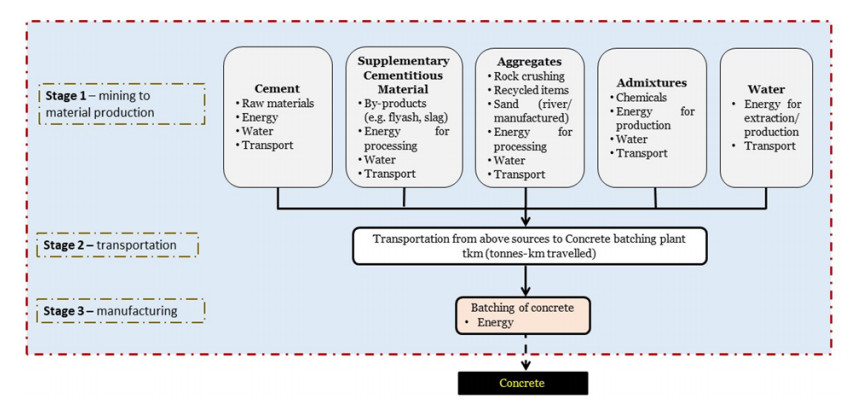
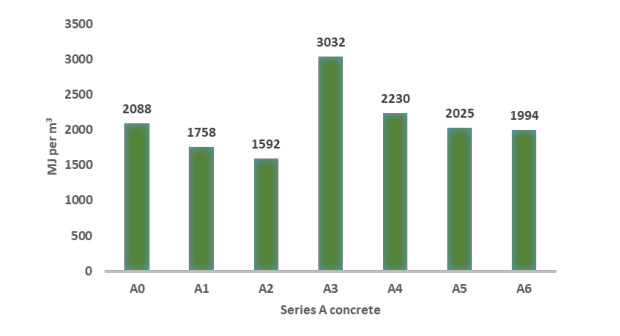
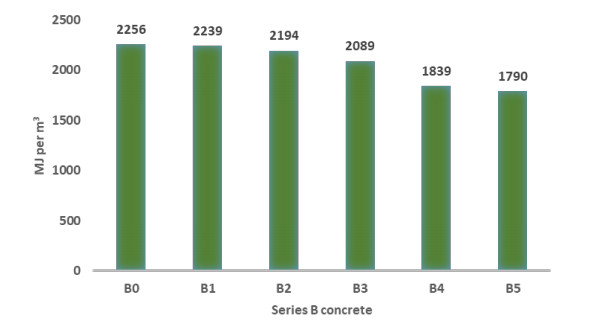
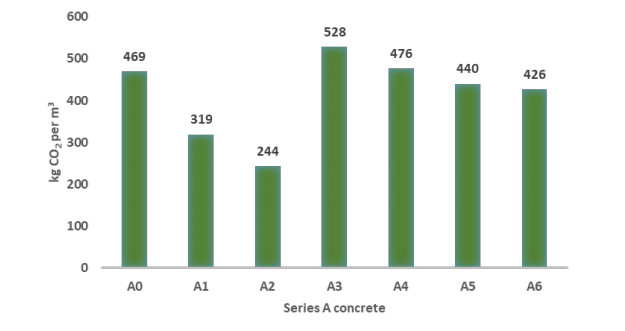
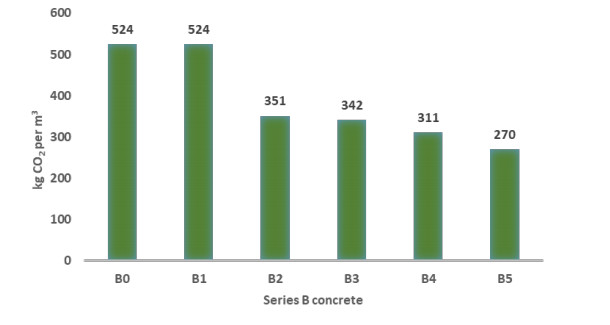


 DownLoad:
DownLoad: